We explore the Cenozoic Era, and discuss its characteristics, divisions and geology. In addition, we describe its climate, flora and fauna.

What is the Cenozoic Era?
The Cenozoic Era, also the Cenozoic, is the last division of the geologic time scale. It started with the extinction of the dinosaurs about 65 million years ago and extends to the present day. It is known as the "age of mammals", since these animals were the dominant life-form during this span of time. It is also the era that saw the emergence of the first humans.
During the Cenozoic, the continents continued to drift from the supercontinent Pangea to their current positions. This process led, among other phenomena, to the formation of the world's present-day largest mountain ranges, oceans and seas, volcanoes, and major plains.
The Cenozoic Era was a time in which the planet's climate gradually cooled down to present levels. Ice ages became longer, and continental drift towards polar regions caused the formation of large ice sheets.
The name Cenozoic derives from the Greek words kainós (meaning "new") and zoe (meaning "life form", "animal"). Hence, Cenozoic means "new life".
- See also: Paleozoic Era
Characteristics of the Cenozoic Era
Among the main characteristics of the Cenozoic Era are:
- It began 65 million years ago and extends to the present day.
- It is subdivided into three periods: Paleogene, Neogene, and Quaternary.
- The continents drifted to their current positions during this era.
- Mammals evolved and diversified.
- The first hominids appeared, which eventually evolved into humans.
- The climate was changeable with periods of high temperatures and prolonged ice ages.
Division of the Cenozoic Era
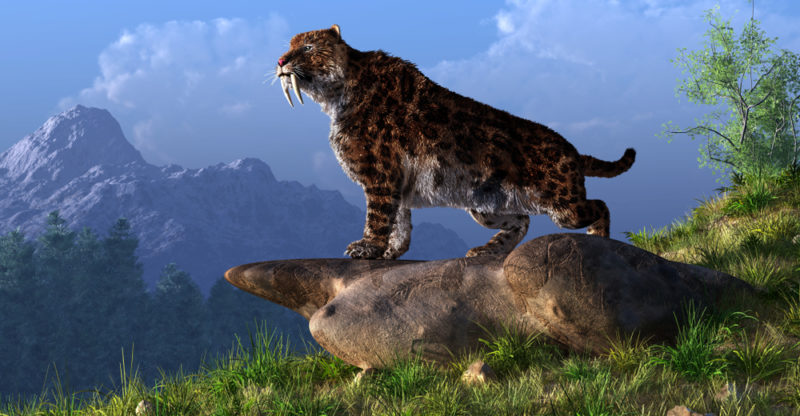
The Cenozoic Era is divided into three periods, each of which is in turn subdivided into different epochs:
- Paleogene Period. It began 65 million years ago and ended 23.8 million years ago. It is further divided into three epochs:
- Paleocene. It began 65 million years ago and ended 54.8 million years ago.
- Eocene. It began 54.8 million years ago and ended 33.7 million years ago.
- Oligocene. It began 33.7 million years ago and ended 23.8 million years ago.
- Neogene Period. It began 23.8 million years ago and ended 1.8 million years ago. It is further divided into two epochs:
- Miocene. It began 23.8 million years ago and ended 5.3 million years ago.
- Pliocene. It began 5.3 million years ago and ended 1.8 million years ago.
- Quaternary Period. It began 1.8 million years ago and extends to the present day. It is further divided into two epochs:
- Pleistocene. It began 1.8 million years ago and ended 11,000 years ago.
- Holocene. It began 11,000 years ago and extends to the present day.
Disuse of the term Tertiary: In the early 20th century, the terms Tertiary and Quaternary were used to make reference to two of the major periods of the Cenozoic. However, in 2008 the International Commission on Stratigraphy (ICS) decided to abandon the use of the term Tertiary. Instead, two new subdivisions were established in its place: the Paleogene and the Neogene. Nevertheless, the term Quaternary was retained. Therefore, the subdivision of the Cenozoic Era was established at Paleogene, Neogene, and Quaternary.
Geology of the Cenozoic Era
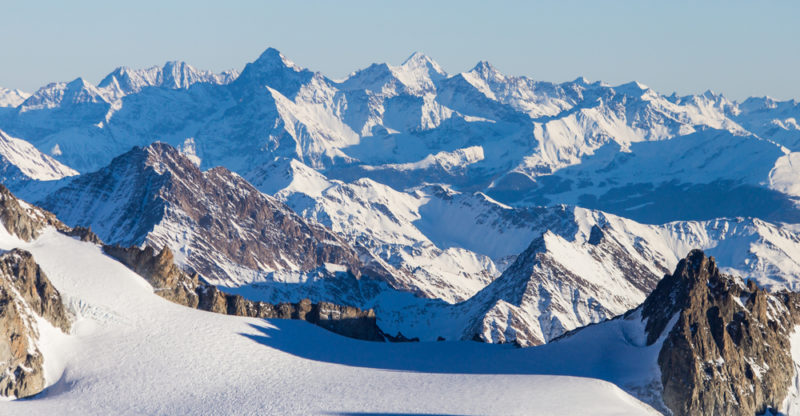
During the Cenozoic Era the supercontinents of Gondwana and Laurasia continued the separation that had begun in the Mesozoic, and the continents gradually acquired their current orientation and position. The Atlantic Ocean widened, and North and South America were joined with the formation of the Isthmus of Panama.
Another major geological event during the Cenozoic was the collision of the Indian and Eurasian plates 50 million years ago, which led to the formation of the Himalayas, the highest mountain range on the planet. Likewise, the African plate collided with the Eurasian plate 35 million years ago, resulting in the complete closure of the Tethys Sea and the formation of the Alps.
The Andes Mountains were formed, extending from north to south across the American continent, as a result of the subduction of the South American and North American plates with the Nazca and Pacific plates.
The latest landscape features to form, and the youngest in geological terms, were the plains. As a consequence of the erosion of rocks and the transport of sediments by the wind and rivers from highland to the lowland regions, large sedimentary basins formed, such as the Amazon, Indo-Ganges, Mississippi, and Paraná basins, among many others.
Climate of the Cenozoic Era
The climate of the Cenozoic has gradually cooled from the end of the Mesozoic Era to the present day. Although the latter era is believed to have ended after a sudden drop in temperature caused by the Sun being blocked by ash in the atmosphere due to the K-Pg extinction event (which caused dinosaurs and many other life-forms to become extinct), temperatures were higher during the Mesozoic than in the Cenozoic Era. The succession of ice ages, combined with the continental drift towards polar regions and the cooling of ocean waters caused the planet's global temperature to fall.
However, there were extensive periods of global warming closer in time to the present day. The Holocene Maximum was a period spanning from around 6,000 BC to 2,500 BC, during which temperatures rose considerably. Likewise, the so-called "Medieval Warm Period" was a time of global temperature rise, between 700 and 1,200 AD.
These warm, relatively stable stages lasting about 12,000 years to the present time made the emergence of human life on Earth possible during the Holocene.
Since the emergence of humans, and particularly in the past 200 years, the modification of the planet's natural dynamics by societies has been so accelerated that in recent years, a new geological era has been proposed: the "Anthropocene". This new classification seeks to measure the enormous impact that the appearance of humans has had in an extremely brief geologic time, especially in relation to climate.
Ice ages
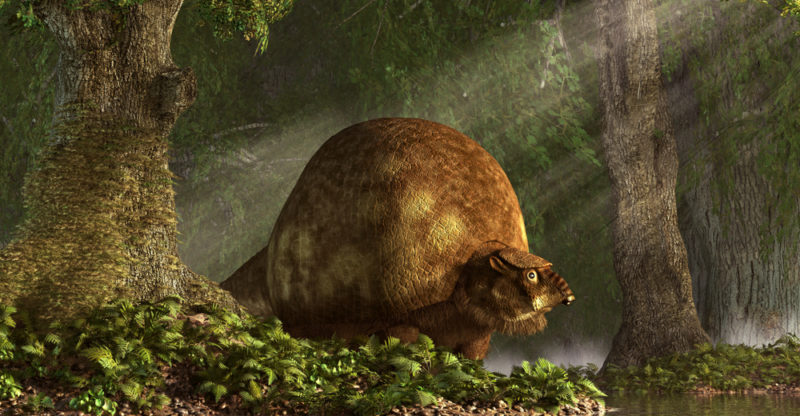
Estimates indicate that during the Quaternary there were numerous periods of atmospheric cooling, which led to glacial periods or "ice ages".
During glaciations, ice expanded, sea levels decreased, and the global climate cooled. During interglacial periods, in contrast, the climate became milder, ice retreated, and ocean levels rose.
In the past million years, four major glaciations would have occurred: the Günz glaciation (1.1 million years ago), the Mindel glaciation (580,000 years ago), the Riss glaciation (200,000 years ago), and the Würm glaciation (the most recent, 80,000 years ago).
Flora of the Cenozoic Era

During the Cenozoic Era, vegetation spread and diversified, particularly during the earlier, warmer and more humid time periods. Eventually, forests gradually gave way to drier and more arid areas that formed within the continental interior. This permitted the rise of grasses.
With the emergence of humans, and especially since the Neolithic Revolution, edible and cultivable species flourished and dominated vast regions of Earth thanks to farming.
The separation of the continents enabled greater diversification, as well as the rise and evolution of endemic species, which are those found only in specific regions of the planet, not diversifying geographically.
Fauna of the Cenozoic Era
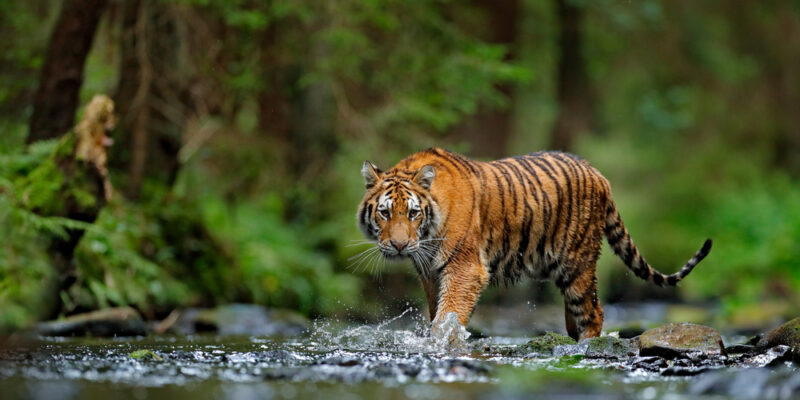
Early in the Cenozoic Era, the species that had survived the Cretaceous-Paleogene mass extinction were mostly small mammals, reptiles, and birds. Therefore, they were the ones to evolve faster, freed from large predators.
Among the mammals were rodents and small equines, whose main predators were large flightless birds, such as those belonging to the genus Titanis.
In the Neogene Period, the earliest primates emerged, including the first hominins, ancestors of the human genus. Bovines, antelopes, gazelles, and other large mammals flourished during this period, as did aquatic mammals like whales.
The Quaternary was characterized by the presence of large feline predators, such as the saber-toothed tiger. Woolly mammoths, adapted to the ice ages, also thrived.
The emergence of the human being changed the fate of many of these species. Some of them became extinct due to hunting, and humans gradually became the dominant species on the entire planet.
Human evolution
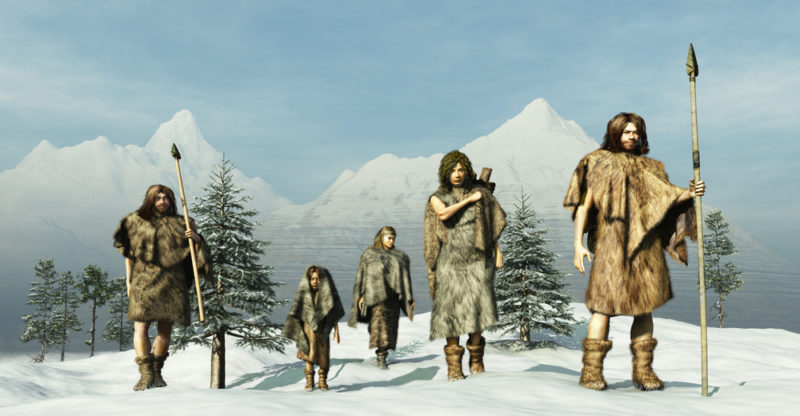
In the Quaternary Period, the earliest humans emerged, the result of a slow process of evolution from the first hominids that originated on the African continent.
When hominins migrated to Eurasia and the Near East, they gave rise to new human species. The last of these were Homo neanderthalensis (Neanderthal man), Denisovan (Denisovan hominin), and Homo sapiens. The latter, commonly referred to as "human beings", is the only species that has survived to the present day.
Explore next:
References
- AstroMía. (s.f.). El Neógeno. Mioceno y Plioceno. https://www.astromia.com/
- EcuRed. (s.f.). Era Cenozoica. https://www.ecured.cu/
- Gullo, J., Nardulli, J. P., Echeverría, M. J., Capuz, S. M., Lazzaro, Y. (2020). El proceso de hominización. En Ciencias Sociales. Sociedades y ambientes del mundo. De las primeras sociedades al fin de la Edad Media (pp. 139-152). AZ. http://az.com.ar/
- Milo, A. (2023). Antropoceno, la era geológica definida por el impacto humano en la Tierra. National Geographic en Español. https://www.ngenespanol.com/
- Tarbuck, E. y Lutgens, F. (2005). Ciencias de la Tierra. Una introducción a la geología física. Pearson Educación.
Was this information useful to you?
Yes NoThank you for visiting us :)